Topic: Army Rations

The Food of Armies (1918)
Some Strange Looking Specimens of Highly Concentrated Rations Prepared for the Nourishment of Soldiers on the Trenches and on the Battlefield
Coffee, tea, chocolate, cocoa, and so on, are indispensable, and in some armies, such as the French, light wine is furnished as part of the regular diet of the soldier. The Germans prefer beer.
The Spokesman-Review, Spokane Washington, 12 January 1918
As long as an army is fed it can fight, provided, of course, that its guns are fed also. We hear more about the food of the guns than about that of the men, but the latter is the more important of the two, as was shown recently when come of our boys in France, having no guns, fought their way out of German captivity with their fists.
The improvements in army food also keep step with those in powder and projectiles. High-powered powder and high-concentration foods are the twin winners of modern battles. Some of the foods used as "emergency rations" are curious indeed, and some possess astonishing powers of nourishment locked up in a very small space. Modern improvements and discoveries in the preservation and concentration of foods have, perhaps, been as effective in extending the range of military campaigns, accelerating the rapidity of strategic movements and increasing the power of sudden blows as any advance in armament.
Meat stands, as it always has done, at the head of the list of essential foods for an army. Bread, in its various forms, comes next. Fruits and vegetables must generally be furnished in preserved and concentrated forms in which shape they supply some of the sugar, which is a very essential element of an army's rations. Coffee, tea, chocolate, cocoa, and so on, are indispensable, and in some armies, such as the French, light wine is furnished as part of the regular diet of the soldier. The Germans prefer beer.
It is asserted that tea is the most sustaining of all the army beverages because it is especially effective in arresting waste of the bodily tissues. It ranks next to milk in this quality. The Russians are the great tea drinkers, and the English are fond of it, but it has never had the popularity of coffee with American men. The Russian army has many forms of compressed tea in its rations, and it is averred that the Russian soldier could hardly fight without tea. One of the illustrations shows a round disk of compressed tea for the Russian army made of whole leaves of prime quality, and weighing three pounds, yet not too large to be slipped into a coat pocket. Other forms in which the tea is preserved are bars, slabs, and balls.
There is an emergency meat ration called the "chain-shot ration" on account of its form. It is used by the Belgians, French and Germans as a winter ration, being too oily for summer use, and L. Lodian says of it in the Scientific American that it "is the finest combination of sustaining and heating qualities known among the meat foods." Each ball is a chain constitutes one complete ration.
But the celebrated "pea-sausage," or erbswurst," of the German army gets a setback on the same authority, for it is said to be "about as unsatisfactory a concentrated ration as any extant, and is actually inedible when uncooked, being of a nauseating, bitter and raw flavor."
The notable ration of the Swiss army is "white chocolate," which consists of nothing but cocoa butter and sugar, the brown parts of the cocoa being removed. Moulded into a cake it resembles in color and gloss a billiard ball. It is more nutritious than brown chocolate.
The emergency ration of our own army, as prepared for the trenches, consists of chocolate tablets and packets of parched cornmeal. The latter seems to have been suggested by the parched corn of the Indians who often, when on the warpath and compelled to undergo great fatigues, subsisted for days on this food alone. Still, as a ration, the pemmican which some of the American tribes ultimately adopted, is said to be much superior in sustaining power to the cornmeal, or any other cereal food, since it contained chopped meat together with grain.
The Italian rations contain chocolate stuffed in sausage-like cases and a kind of plum duff, stuffed with raisins, and inclosed in a long membrane, in which it can be cooked with steam, while the empty case will serve for a tobacco pouch.
The Italian duff is said to be more nourishing than the British plum pudding. A kind of "spotted dog" is prepared with dark Italian wines instead of water, while rich nut meats are used for shortening. This recalls the rye hardtack of the Russians, in the making of which beef blood is emplyed instead of water.
But the nearest approach to the ideal emergency ration is said to be "the unsalted, sun-dried, paper-thin meat sheets" issued to some of the Latin American armies. It can be folded up and pocketed like paper, and is ready to be eaten withour preparation of cooking. Similar sun-dried meats in sheets are used by the soldiers of some Asiatic and African tribes.



 January 29th is the anniversary of the institution of the soldiers most precious decoration—perhaps the most precious decoration in the world—the Victoria Cross, for it was instituted by Her Majesty, the late Queen Victoria, on the 26th day of January, 1856, and so is not quite 50 years old. While it is the most prized of all the decorations and orders an Englishman can win, it is also the most democratic decoration in the world, although it is the official badge of an actual personal courage and daring, it has no concern with rank, long service or wounds, and it may be worn by one who has been only a few months, or even weeks, in the army, while other who have spent their lives in the service and gained rank and other decorations may not possess it.
January 29th is the anniversary of the institution of the soldiers most precious decoration—perhaps the most precious decoration in the world—the Victoria Cross, for it was instituted by Her Majesty, the late Queen Victoria, on the 26th day of January, 1856, and so is not quite 50 years old. While it is the most prized of all the decorations and orders an Englishman can win, it is also the most democratic decoration in the world, although it is the official badge of an actual personal courage and daring, it has no concern with rank, long service or wounds, and it may be worn by one who has been only a few months, or even weeks, in the army, while other who have spent their lives in the service and gained rank and other decorations may not possess it.


 The remarks of Lieutenant-General Sir Selby-Smith, in his annual report, on the necessity of an organized force which could always be depended on in case of such disturbances as those of which the country has recently has experience, are worthy of careful attention. The inconvenience of employing volunteers for the purpose of quelling riots in which their own fellow-citizens are the actors has often been felt; and we have not to go far in either space or time for illustrations of some of the bad results of the system. The formation of a small permanent force such as that which General Smyth suggests would remove that inconvenience and make the repression of disorder practicable without the risk of provoking complications that are the most difficult to deal with. As to the plan on which such a force should be raised, General Smyth has certainly quite sufficient military knowledge and experience, and well as acquaintance with the needs and capabilities of the Dominion, to enable him to frame one in every way suitable. It will have been seen that he proposes that three regiments should be maintained by the Federal Government, composed of two battalions each, to be raised and recruited in Canada, each battalion to serve in the old country and here for alternate terms of three years, thus completing their period of enlistment, which should be fixed at six years. At the close of their six years' service the men composing the battalions should pass into a reserve and receive a grant of land or some other inducement to settle permanently in the country, with a stake in it. By this system of alternation and interchange, complete solidarity would be established between the soldiers of Canada and that of the Empire, and our little Canadian force have full opportunity for thorough training, and be imbued with a British spirit. In case of war the system would be capable of expansion to any limits required. Another scheme proposed was that only three Canadian battalions should be formed, whioch should be interchanged triennially with an equal British force of the line. Hitherto, it appears that nothing has been done towards giving either suggestion a practical form, but it is hoped that the matter will not be lost sight of. Of course, the carrying out of such a plan would not interfere materially with our Canadian militia, as at present organized and composed. It would be from the militia that, in all likelihood, such a force would be, to a great extent, supplied and on it also it would have to mainly depend for the enlargement which extraordinary contingencies might necessitate. The value of such a force may be inferred from what general Selby-Smyth says in another part of his report regarding the probable effect of the muster of volunteers is this city last Queen's Birthday on the Fenian raiders who were at that time rumoured to be about to cross the line into Canada. He thinks, and with good reason, that there were Fenian spies present on that occasion and that the sight of so large a body of well trained and well equipped soldiers, whom they would have to encounter, if they attempted to put their project into execution, had a salutary influence in deterring them from the menaced movement. How much more would such disturbers be cowed into tranquility is a permanent force, always armed and prepared to meet invasion, were maintained in the Dominion! In a short time we should probably be put to no more trouble or expense (and such occasions have cost us our share of both) from such unscrupulous free booters.
The remarks of Lieutenant-General Sir Selby-Smith, in his annual report, on the necessity of an organized force which could always be depended on in case of such disturbances as those of which the country has recently has experience, are worthy of careful attention. The inconvenience of employing volunteers for the purpose of quelling riots in which their own fellow-citizens are the actors has often been felt; and we have not to go far in either space or time for illustrations of some of the bad results of the system. The formation of a small permanent force such as that which General Smyth suggests would remove that inconvenience and make the repression of disorder practicable without the risk of provoking complications that are the most difficult to deal with. As to the plan on which such a force should be raised, General Smyth has certainly quite sufficient military knowledge and experience, and well as acquaintance with the needs and capabilities of the Dominion, to enable him to frame one in every way suitable. It will have been seen that he proposes that three regiments should be maintained by the Federal Government, composed of two battalions each, to be raised and recruited in Canada, each battalion to serve in the old country and here for alternate terms of three years, thus completing their period of enlistment, which should be fixed at six years. At the close of their six years' service the men composing the battalions should pass into a reserve and receive a grant of land or some other inducement to settle permanently in the country, with a stake in it. By this system of alternation and interchange, complete solidarity would be established between the soldiers of Canada and that of the Empire, and our little Canadian force have full opportunity for thorough training, and be imbued with a British spirit. In case of war the system would be capable of expansion to any limits required. Another scheme proposed was that only three Canadian battalions should be formed, whioch should be interchanged triennially with an equal British force of the line. Hitherto, it appears that nothing has been done towards giving either suggestion a practical form, but it is hoped that the matter will not be lost sight of. Of course, the carrying out of such a plan would not interfere materially with our Canadian militia, as at present organized and composed. It would be from the militia that, in all likelihood, such a force would be, to a great extent, supplied and on it also it would have to mainly depend for the enlargement which extraordinary contingencies might necessitate. The value of such a force may be inferred from what general Selby-Smyth says in another part of his report regarding the probable effect of the muster of volunteers is this city last Queen's Birthday on the Fenian raiders who were at that time rumoured to be about to cross the line into Canada. He thinks, and with good reason, that there were Fenian spies present on that occasion and that the sight of so large a body of well trained and well equipped soldiers, whom they would have to encounter, if they attempted to put their project into execution, had a salutary influence in deterring them from the menaced movement. How much more would such disturbers be cowed into tranquility is a permanent force, always armed and prepared to meet invasion, were maintained in the Dominion! In a short time we should probably be put to no more trouble or expense (and such occasions have cost us our share of both) from such unscrupulous free booters.

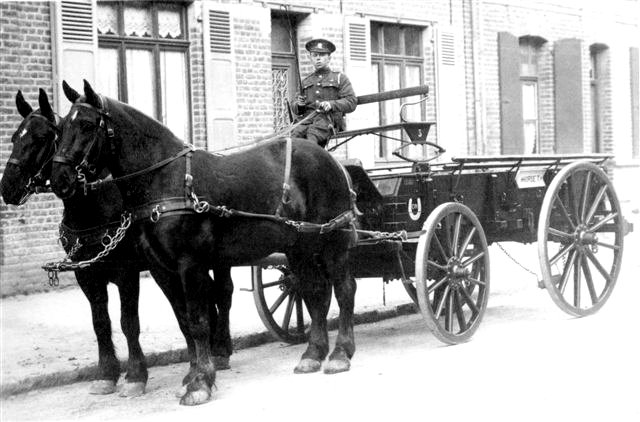

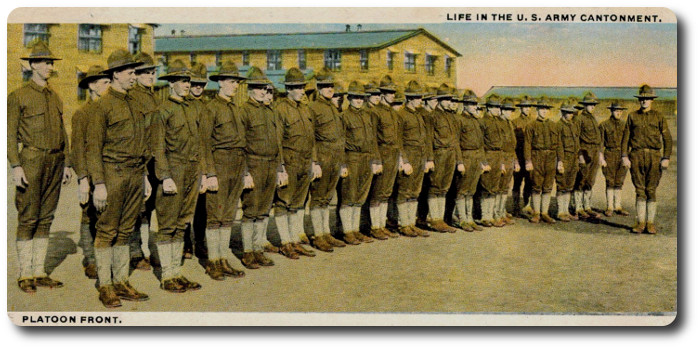
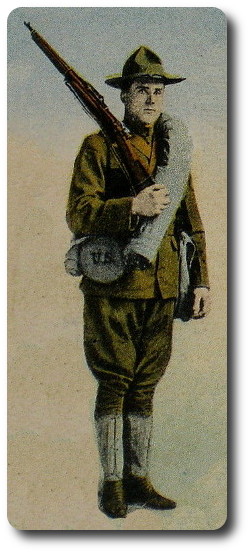 Each soldier in a modern army carries with him sufficient food, clothing, shelter, fighting arms and ammunition to take care of himself for a short period in case he should be separated from his company. The total weight of his load, in addition to the clothes he wears, is 50 to 70 pounds. The number of articles is surprisingly large. They are so devised, however, that by ingenious methods of packing and adjusting they can all be carried with the least possible effort.
Each soldier in a modern army carries with him sufficient food, clothing, shelter, fighting arms and ammunition to take care of himself for a short period in case he should be separated from his company. The total weight of his load, in addition to the clothes he wears, is 50 to 70 pounds. The number of articles is surprisingly large. They are so devised, however, that by ingenious methods of packing and adjusting they can all be carried with the least possible effort.

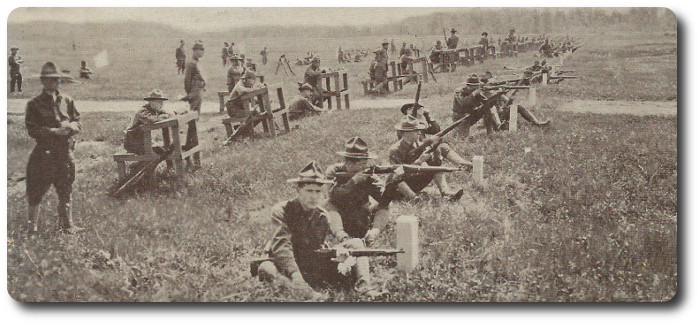

 His Excellency the Commander in Chief has been pleased to direct that Captain Hanson's Company, No. 1, of the
His Excellency the Commander in Chief has been pleased to direct that Captain Hanson's Company, No. 1, of the 
 Militia General Orders
Militia General Orders


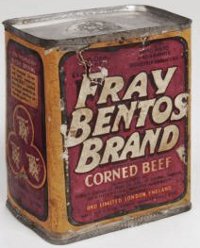 Frozen meat at present constitutes 60 per cent of the total meat issued to the British army. The remainder is made up of preserved meat of several varieties. The most familiar form is the well-known "bully beef," which is corned beef packed in small oblong tins, each containing 12 ounces. Some units cook their bully beef, other prefer it just as it comes from the tin. In comprised the principal article of diet for the army at Gallipoli.
Frozen meat at present constitutes 60 per cent of the total meat issued to the British army. The remainder is made up of preserved meat of several varieties. The most familiar form is the well-known "bully beef," which is corned beef packed in small oblong tins, each containing 12 ounces. Some units cook their bully beef, other prefer it just as it comes from the tin. In comprised the principal article of diet for the army at Gallipoli.

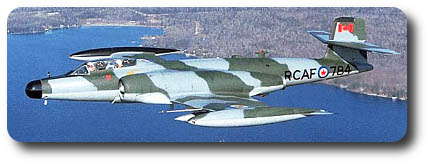 The entire Canadian air defence potential, excluding only a division of jet interceptors stations in Europe, is in process of being put under the operational control of the North American Air Defence Command at Colorado Springs, along with USAF jets.
The entire Canadian air defence potential, excluding only a division of jet interceptors stations in Europe, is in process of being put under the operational control of the North American Air Defence Command at Colorado Springs, along with USAF jets.




 Mr. Harkness then referred to the three weapons systems coming into service with the armed forces as all having a nuclear capability. These were the Honest John rocket launcher for the army, the Bomarc anti-aircraft weapon for the RCAF at home, and the CF-104 jet strike-attack plane for the air force in Europe.
Mr. Harkness then referred to the three weapons systems coming into service with the armed forces as all having a nuclear capability. These were the Honest John rocket launcher for the army, the Bomarc anti-aircraft weapon for the RCAF at home, and the CF-104 jet strike-attack plane for the air force in Europe.